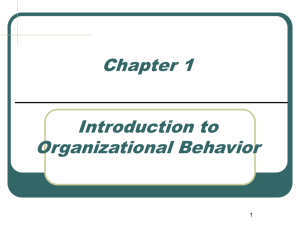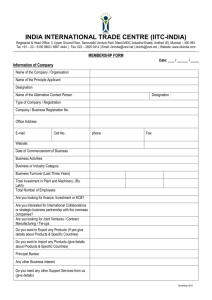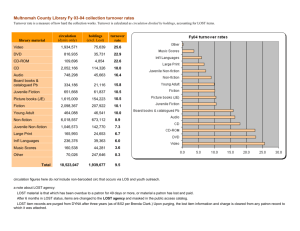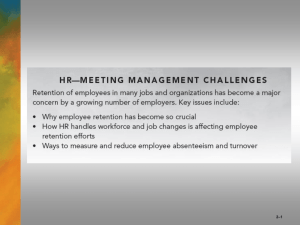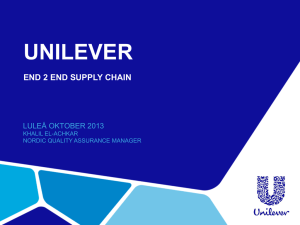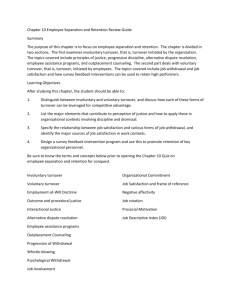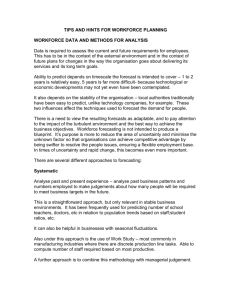ESSAY QUESTIONS
advertisement
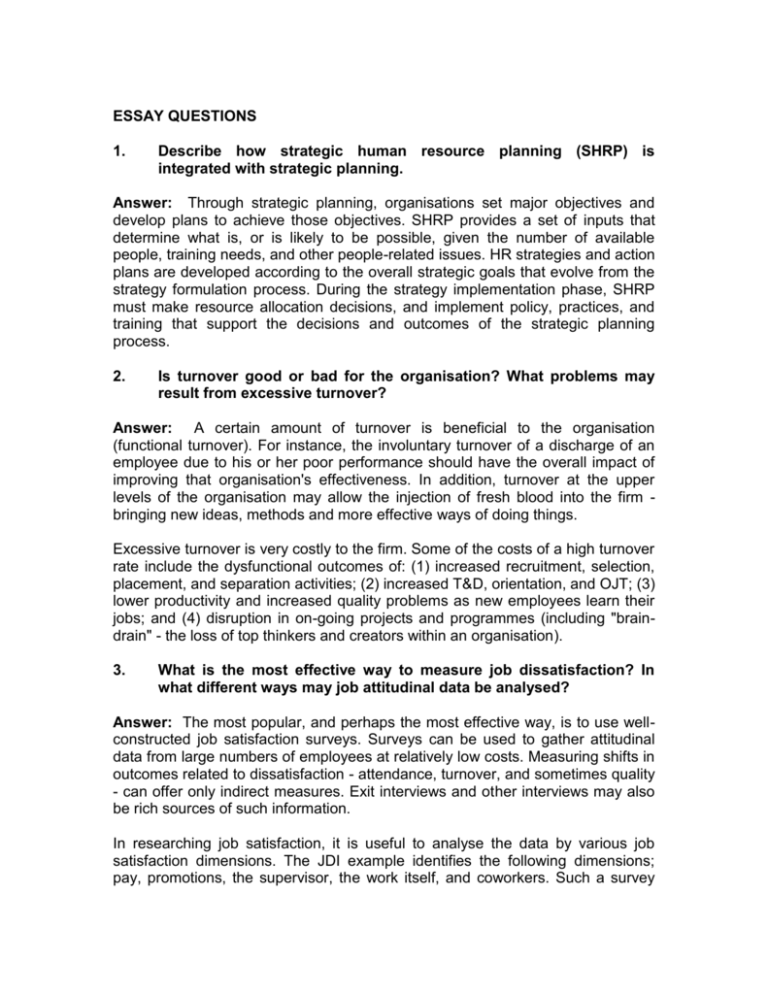
ESSAY QUESTIONS 1. Describe how strategic human resource planning (SHRP) is integrated with strategic planning. Answer: Through strategic planning, organisations set major objectives and develop plans to achieve those objectives. SHRP provides a set of inputs that determine what is, or is likely to be possible, given the number of available people, training needs, and other people-related issues. HR strategies and action plans are developed according to the overall strategic goals that evolve from the strategy formulation process. During the strategy implementation phase, SHRP must make resource allocation decisions, and implement policy, practices, and training that support the decisions and outcomes of the strategic planning process. 2. Is turnover good or bad for the organisation? What problems may result from excessive turnover? Answer: A certain amount of turnover is beneficial to the organisation (functional turnover). For instance, the involuntary turnover of a discharge of an employee due to his or her poor performance should have the overall impact of improving that organisation's effectiveness. In addition, turnover at the upper levels of the organisation may allow the injection of fresh blood into the firm bringing new ideas, methods and more effective ways of doing things. Excessive turnover is very costly to the firm. Some of the costs of a high turnover rate include the dysfunctional outcomes of: (1) increased recruitment, selection, placement, and separation activities; (2) increased T&D, orientation, and OJT; (3) lower productivity and increased quality problems as new employees learn their jobs; and (4) disruption in on-going projects and programmes (including "braindrain" - the loss of top thinkers and creators within an organisation). 3. What is the most effective way to measure job dissatisfaction? In what different ways may job attitudinal data be analysed? Answer: The most popular, and perhaps the most effective way, is to use wellconstructed job satisfaction surveys. Surveys can be used to gather attitudinal data from large numbers of employees at relatively low costs. Measuring shifts in outcomes related to dissatisfaction - attendance, turnover, and sometimes quality - can offer only indirect measures. Exit interviews and other interviews may also be rich sources of such information. In researching job satisfaction, it is useful to analyse the data by various job satisfaction dimensions. The JDI example identifies the following dimensions; pay, promotions, the supervisor, the work itself, and coworkers. Such a survey should be analysed by all groups of employees which might yield insight. Many employers would, therefore, analyse by shift, department and division, supervisor, work group, job group or level, years of service or age, etc. 4. Why may an employee feel that s/he is being treated unfairly? What HR programmes may be implemented to reduce employees' feelings of unfairness? Answer: Perceptions of unfairness result when employees feel that have been treated differently than other employees of groups of employees, or when they feel that they have not been treated fairly for what they have done themselves (e.g., not paid what they were promised for working extra hours). Another way to attempt to understand fairness is to consider the justice theories. For instance, one theory suggests that the process used to make a decision (procedural justice) is separate from the decision itself (distributive justice). Reduction of perceptions of unfairness would include the following - some of which are focused upon procedural and other upon enhancing distributive justice: (1) reclassification of jobs which appear inequitably paid when compared to others at the same workplace; (2) changing the method in which jobs and tasks are assigned; (3) base promotions on more objective measures of performance when possible: (4) train supervisors to distribute the work load fairly (and so it looks fair); (5) conduct wage surveys to determine if pay levels are competitive (to increase external equity - so accountants at your company feel like they are paid competitively with other accountants in the region); (6) allow employees more autonomy in planning and controlling their own work; and (7) administer and enforce policies, procedures, rules, and regulations fairly and in an uniform manner. 5. Whose responsibility is it to control employee absenteeism - the line manager's or the HR manager's? Explain how responsibility for control of this problem might be divided. Answer: Both line and HR staff share this problem. Ultimately the control of absenteeism is line management's job, but HR management assumes an important staff function in providing assistance in combating and analysing the problem. Some specific responsibilities that HR may assume include: (1) formulate reasonable goals; (2) create policies; (3) create information systems to track attendance; (4) conduct research to uncover possible causes of absenteeism. Line management's responsibilities include: (1) collecting and reporting absence data, including categorising of reasons for the absences; (2) counselling and discipline of workers; (3) creating a satisfying work environment to minimise dissatisfaction as a cause of absenteeism.
